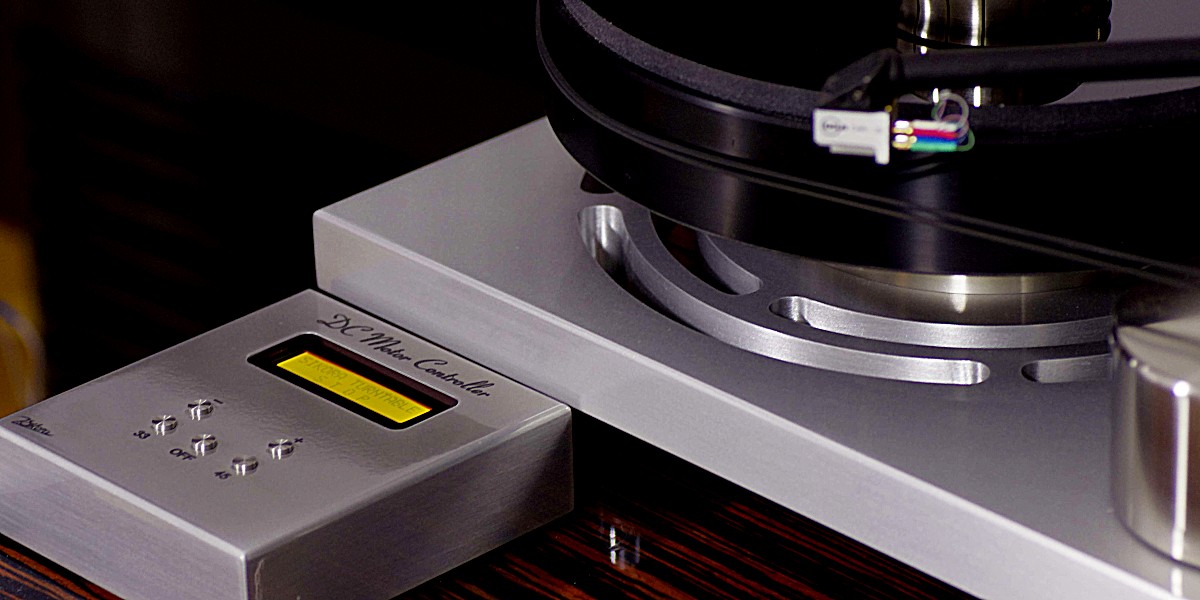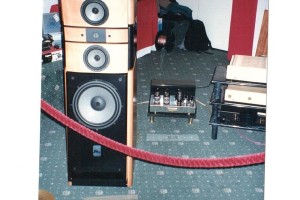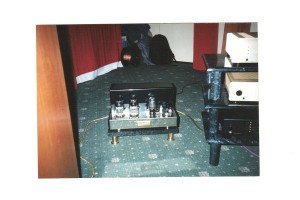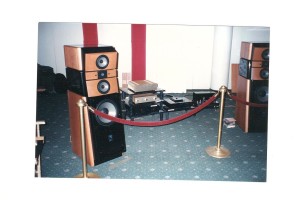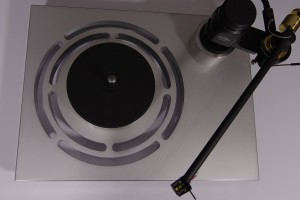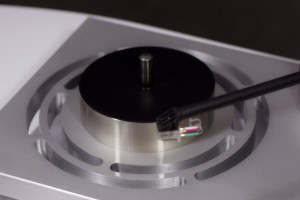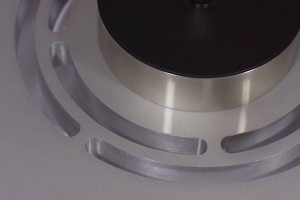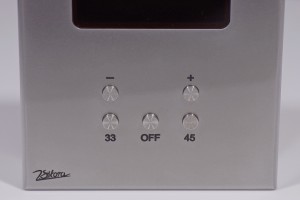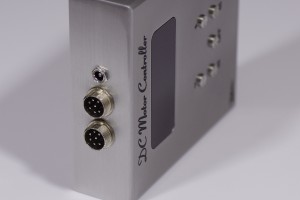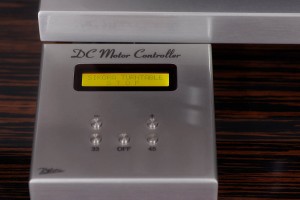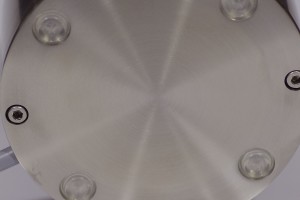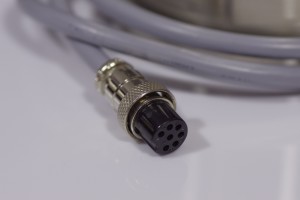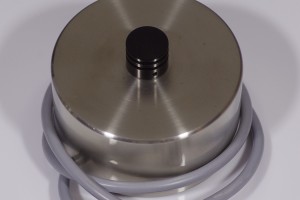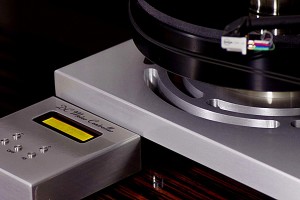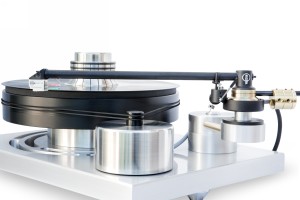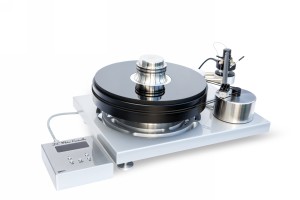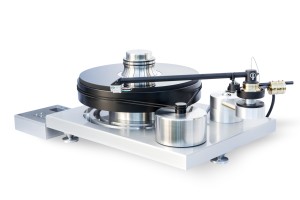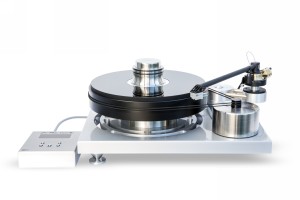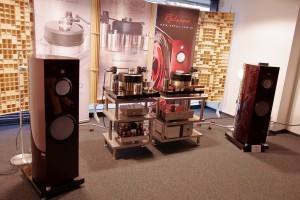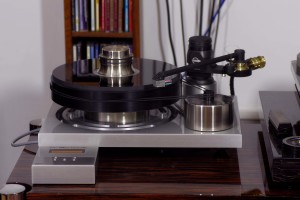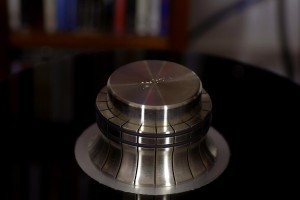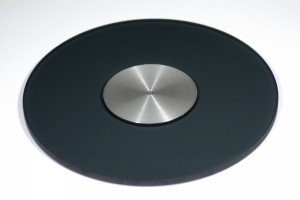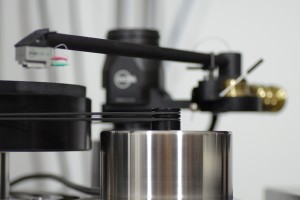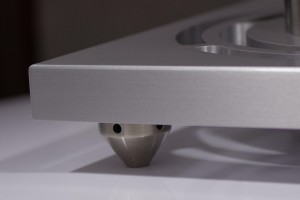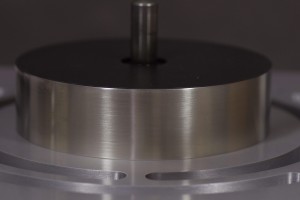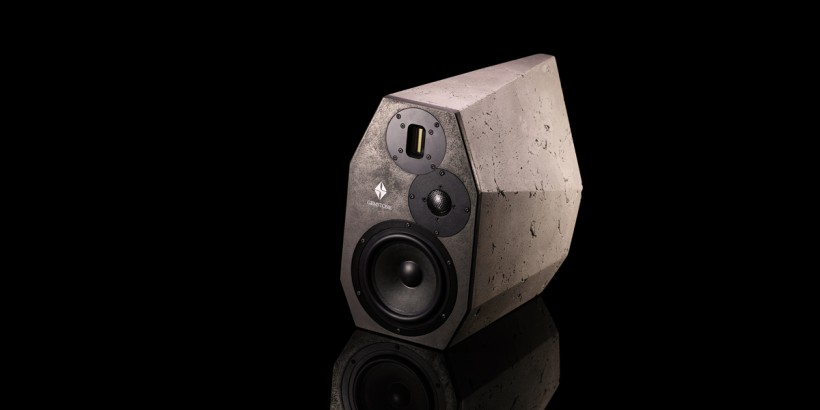For almost a year now I have been a proud owner of Mr Janusz Sikora’s turntable called “The Standard”. Until recently, it was the less expensive of the two models offered by this Polish company, as there was one more in the lineup, the flagship called “The Reference”. During the Audio Video Show 2016 in Warsaw though, another entry level model premiered, which was simply named J.Sikora Initial. Just before the Show I had a chance to audition and assess this interesting novelty. Let me present you here with my findings.
Introduction
Those who were into audio already twenty years ago might remember Burdiak-Sikora tube amplifiers that were quite popular at the time in Poland. These were surely different times when virtually nobody had access to Internet and yet most audiophiles at least recognized the brand if not for any other reason, surely because of the presentation held during Audio Show 1997 with Burdiak-Sikora monaural amplifiers driving the famous Focal Utopia loudspeakers.
Above images from Warsaw Audio Show 1997.
Some time later cooperation between two designers fell apart and we lost sight of Mr Janusz Sikora for many years. But then, a few years back, some rumors started that he was back, this time with turntables branded J.Sikora. At first, it was difficult to find any specific information about them, as they were actually built almost exclusively for friends of the designer. I managed to find some photos of these decks in the web only to find out an interesting fact – Mr Sikora’s decks were often coupled with the Trans-Fi tangential tonearm, exactly the same as the one I firstly reviewed and later purchased for my personal use. Well, that told me that we must have had something in common with Mr Janusz – at least the same taste in tonearms. I found out later that Mr Sikora started using this arm after reading my review.
As he told me later, it was the happy and proud owners of his decks who persuaded him to participate in the 2014 Audio Show in Warsaw to present his creations to the public. People who visited the room of this Polish manufacturer couldn’t believe that it was even possible to make such well-made, great looking, and sounding devices in our country. The design, build quality and finish were astonishing and by no means accidental. On one hand some influences or inspirations taken from other, well-known decks were quite obvious, but it is virtually impossible to avoid them. On the other though, Mr Sikora introduced also some proprietary solutions to the design, chose some exotic material and the quality was simply remarkable, comparable with any other top-high-end product of this kind. It was difficult to assess the performance based on the listening during the show, but it was clear to me that there was a huge potential there.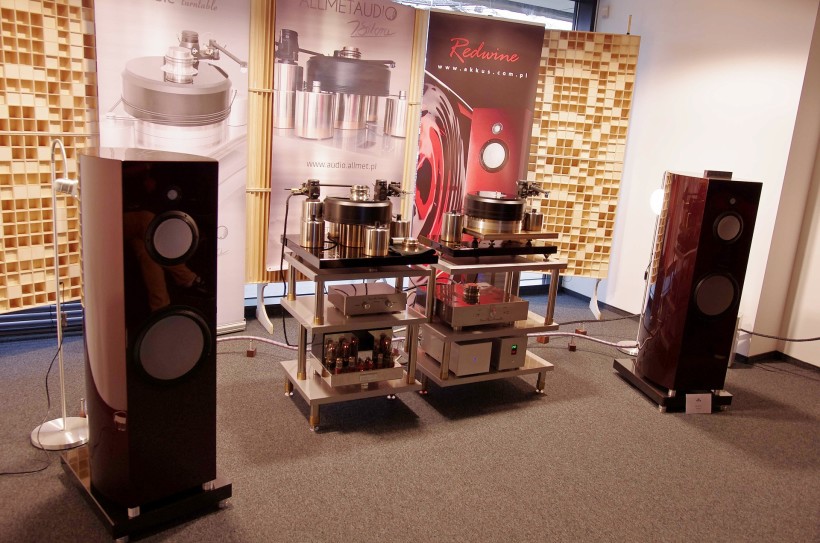
One of the biggest problems faced by small manufacturers, not only in Poland but in most countries, is a matter of first producing a proper quality and then sustaining it by suppliers of parts and components. In most cases no matter if the company makes turntables, loudspeakers, amplifiers, or some vibration-control elements, it always has to rely on at least some cooperatives. Finding those who are able to offer proper quality of workmanship is very difficult – I heard the same story from many domestic manufacturers. And yet finding them does not mean the end of the problem. After a few deliveries the quality of delivered parts worsens. Reasons for that vary from case to case, but it happens really often. When it happens it might be still possible to convince the supplier to raise quality again, which usually means paying more for exactly the same parts. The other choice is to look for a new supplier but the cycle of good-bad quality might just start again. Why do I even mention that? Well, because this problem (almost) does not apply to Mr. Sikora’s business. The vast majority of the elements of his turntables are made in-house as his main business, the one he makes his living off, specializes in metal products and metalworking. The main headache of this Lublin-based manufacturer is therefore finding some time in their busy schedule to momentarily switch the production to the elements needed for the turntables. For now, Mr. Janusz somehow manages, so the quality of build and finish and the repeatability of the quality are guaranteed and dare I say it almost unparalleled.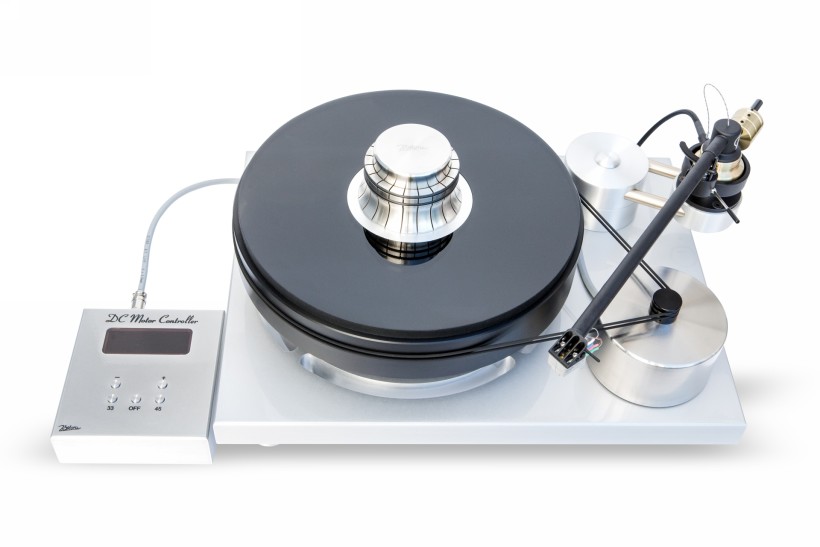
There is one more huge advantage of having one’s own company, which produces components needed for building audio products. It’s a possibility of experimentation, trying out different materials, solutions and so on. Where others have to commission the testing new ideas to outside suppliers, Mr. Janusz executes R&D in-house, pursuing different ideas on his own. It also costs money but surely much less than when an external companies have to be used for that. Do you remember the presentation of the Standard Line turntable made of bronze during Audio Video Show 2015? It was a result of one such experiments. As Mr Janusz told me, a very successful one. The problem in this case was the cost of the material that made this version not only more expensive than original one, but it would cost even more than top-of-the-line Reference Line deck. Thus making it most likely unsalable.
The J.Sikora’s lower costs in both R & D and production plus the particular approach of the owner, who treats the production of turntables more as a hobby than a way to make money made it possible to offer both, Standard and Reference Line turntables at relatively attractive prices. Even though in principle I do not agree with what’s been going on on the audio market in the last years with prices endlessly going up I told Mr. Janusz more than once that he sold his turntables too cheap compared to the competition. Yes, I knew that they were not cheap, but any price is always relative and should refer to adequate in quality and performance products available on the market. And considering that I dared to say that Standard and Reference Line decks were priced very attractively, to put it mildly. There was one more aspect of the issue that made it possible – direct sales, meaning customers could buy these products only directly from manufacturer. On the one hand, the lack of dealership network made it difficult to audition these turntables outside Lublin, on the other it contributed to attractive pricing. By the way – if you’re interested and it is possible for you to go to Lublin and visit Mr Sikora, go ahead and contact him. I already sent some seriously interested people directly to him, and as far as I know no one has left the meeting with the designer disappointed. And the number of units sold has been growing… After shows in UK and in Warsaw in 2016 the situation changed. Many distributors from around the world expressed their interest and started cooperation with this Polish manufacturer. That meant, unfortunately for end-users, that the prices had to go up because distributors had to earn their share. On the upside there are now units available in several countries already so if you’re interested you have a chance to listen to them before purchase.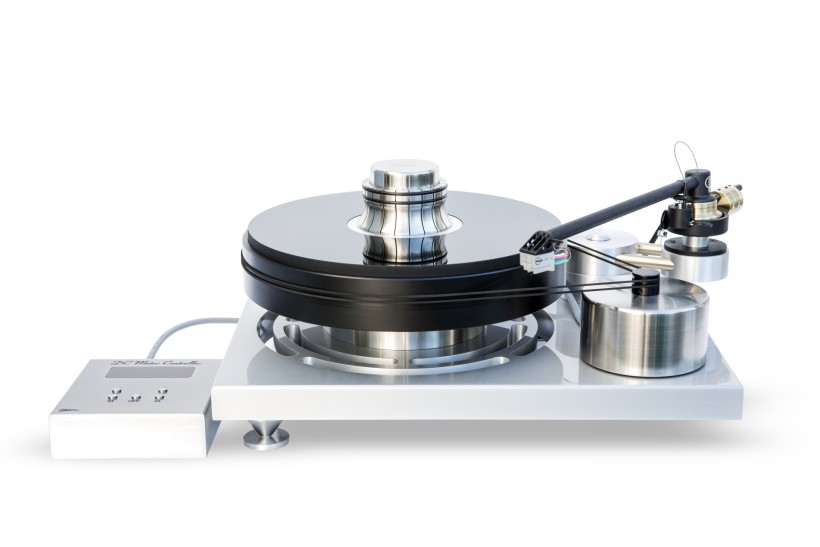
The new product that premiered during above mentioned shows in November last year proved again Mr. Sikora’s approach to the business and his customers. Instead of, for example, monetizing the above mentioned experiment with bronze as base material and offering a several times more expensive version of the Reference, our designer spent a lot of time to create the turntable he could offer for half the price of the Standard while keeping as much of the performance quality as possible. Sure, the new Initial Line deck is not a “volks-deck”, so to speak, as its price won’t let it compete with inexpensive Regas and Pro-Jects. It might be the entry-level deck for the J.Sikora brand but it still offers a truly high-end performance. It obviously can not quite match the Standard Line’s performance but the difference between these two is definitely smaller than the price difference would suggest. So it is surely worth taking a closer look.
Design
The Initial Line is a much smaller device than its older/larger brothers. It occupies a much smaller space on the rack and it doesn’t weight the colossal 85kg as my Standard Line deck, or more than 100 kg as the Reference does, but “only” 28kg. Despite being much lighter it still belongs to a non-suspended mass-loader category. Like other models it also looks astonishingly well (yes, I know it’s a matter of taste, but I would doubt sincerity of a person who would tell me that in his/her opinion the Initial looked bad) and since it uses some elements identical to the ones of the Standard Line one should expect the same highest build and finish quality and great price/performance ratio.
A thick aluminum slab constitutes the base of this deck. For the more expensive models their bases are composed of several layers of different materials with varying density which contributes to a better vibration damping. In this case to cut the price of the Standard line in half the manufacturer had to find a way to reduce costs. The very basic goal was a significant reduction in costs that would not involve a significant degradation of sound quality. The solution was found experimentally (one of the above mentioned advantages of doing almost everything in-house) – the specific cut-outs in the base of the deck, that you can see on some photos, do the job really well.
The Starter features a platter made of POM – same material is used in all three models. It was chosen for its particular properties and Mr. Sikora saw no reason to change that even for the entry-level model. This turntable sports one, absolutely quiet, motor, which drives the platter directly transmitting torque using two flat rubber belts. The engine, main bearing and high-end controller provide excellent speed stability and are exactly the same as in Standard Line deck (though the latter uses two motors, not one). Mr. Janusz is an advocate of high power motors that are able to rapidly accelerate even a heavy platter, precisely maintain the required speed and immediately stop it when required. The one used for Starter is placed in a solid, rigid and heavy metal housing placed on four silicone pads that damp vibrations. The controller is a separate, well-made metal box with a small but clear display, which shows the chosen speed. There are five push-buttons that allow user to select speed (33 and 45 rpm), stop the spin, and the other two (+/-) allow him to precisely adjust the speed, if needed. The controller box also features four silicone pads on its bottom.
The whole deck rests on aluminum feet with a small, semi-round cavities at their ends – that’s where ceramic balls come in (one into each foot), which in turn rests in a cavity in the aluminum pad.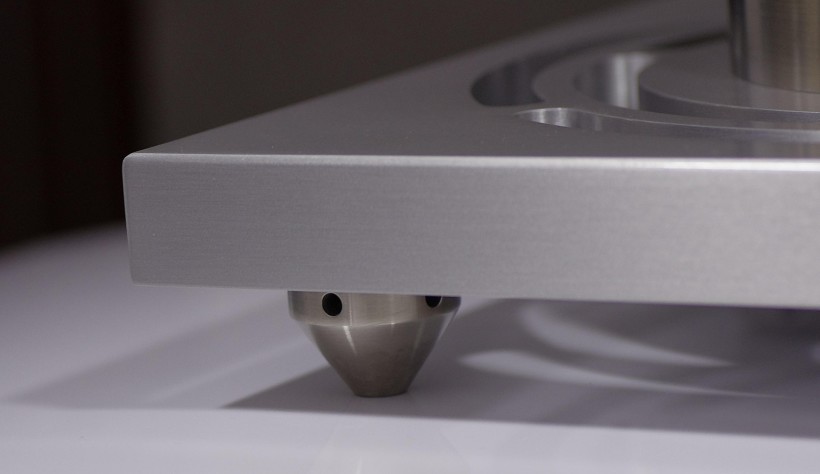
The J.Sikora company does not make its own tonearms, nor cartridges. They have been cooperating with one of the most renowned European manufacturers, the Slovenian Kuzma Company, for years. The Initial delivered for the review featured Stogi S 12 VTA tonearm and CAR-30 pickup, both made by Kuzma. Customers might choose to purchase the deck alone, but Mr. Janusz prepared for them an interesting offer. He proposes, namely, a full setup with the above mentioned tonearm devoid of VTA tower (meaning S12 model, no VTA). The designer claims that it offers the same level of performance, although it lacks the functionality of adjusting VTA on the fly. This is a handy function, agreed, but the question each buyer has to answer for himself is whether it is worth several hundred euros for him? For most users it’s probably not – so if one can get the same level of performance for less money why not save some and spend it on, eg., few dozens of vinyl records? As for the cartridge manufacturer suggests starting also with less expensive model from Kuzma – CAR-20. So a complete turntable, as proposed by Mr. Sikora, can be delivered with S12 arm and CAR-20 cartridge. Of course, the customer can use virtually any tonearm (he just needs to ask Mr. Janusz for proper arm-board) and cartridge (any matching the particular tonearm). From my experience I can tell you that the proposed complete setup offers excellent price/performance ratio, one that would be hard to match with any other combination of elements that I know of. My recommendation would be to trust this manufacturer and go with his suggestion. Unless of course you’re willing to spend more for even better performance, then, by all means, you can discuss with Mr Janusz even better tonearm and/or cartridge.
Another element that people interested in this turntable should also consider are possible upgrades. There are few of them and I will try to describe their impact on the performance below. Let me just name them first. Any user can purchase optionally a glass mat, record clamp and a higher quality power supply unit.
Sound
As I already mentioned I received the Initial equipped with somewhat more expensive version of the tonearm and cartridge than the very basic version offered to customers. The unit under review featured Kuzma S12 tonearm with on-the-fly VTA adjustment and CAR-30 cartridge. I did not have a chance to listen to this arm without VTA but Mr. Janusz told me (and I had no reason to doubt him) that there is no difference in sound quality at all between these two – it is the same arm after all, with added functionality in the more expensive version that makes usage more convenient without affecting the performance. Most people use the same cartridge for years, they don’t necessarily have a heavier (180 or 200g) vinyls, so adjusting VTA is not something they do every day. Thus, I believe that if a need to raise or lower the arm appears, classic, though less convenient, way of adjusting VTA will not be a problem. The CAR-20 cartridge may not be much cheaper than the next, CAR-30, model, but since the stylus wears off over time and it has to be replaced sooner or later starting with less expensive pickup and upgrading it after few years is not a bad solution either if is on a tight budget. One can choose a different tonearm obviously – Mr. Janusz is able to prepare almost any arm-board for the customer provided he receives the necessary data for it. I took the advantage of this option myself when I decided to use the Schroeder CB on my Standard deck.
To sum it up – I reviewed this deck with Kuzma Stogi S12 VTA tonearm and CAR-30 cartridge. The latter in course of the review was also replaced with my own Air Tight PC-3 (circa twice more expensive than Kuzma) and slightly cheaper Dynavector, DV 20X2 H and L (high- and low-signal) pickups. Any of the latter two may be an even less expensive alternative to CAR-20 as they did a great job, too.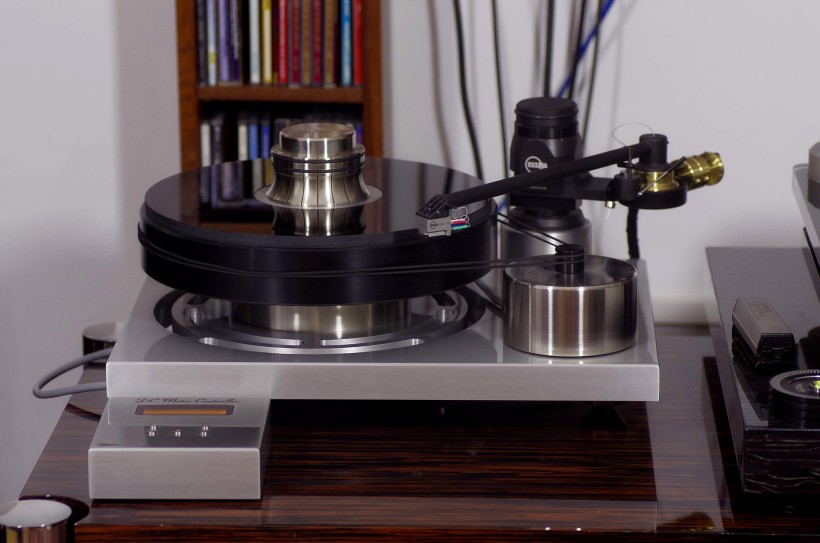
One of the first records, which landed on the platter of the reviewed unit was actually an album that I rarely pull off the shelf, as it’s been a big disappointment ever since the purchase. U2 has always been one of my favorite bands and I used to love to listen to their music. The problems began after I purchased my first decent stereo system as I soon learned that the quality of their recordings did not match their artistic/musical value. A few years ago U2 released an anniversary two-disc edition of the wonderful “Joshua Tree”, which, of course, I purchased, hoping that this time they managed to deliver better sound quality than with the original. After several disappointing attempts this album also landed on the shelf with all the others, because I couldn’t find this promised “definitely higher quality”. For whatever reason I decided to give it another try with the Initial. The stylus hit the groove, I heard “I want to run …” from the first track, and found myself truly surprised. I kept listening through the entire first side, well not just listening but also singing along with Bono, my foot was tapping, my head rocking… Wow! That was unexpected. I turned the record to the other side and kept going. Clayton’s powerful bass marked the rhythm perfectly, Edge’s guitar sounded surprisingly clean, the drums were still more firmly tucked in the back, but I could finally hear the cymbals shimmering, they were not as dull as they usually seem. And yes, Bono’s vocal was finally expressing at least some of his passion, of these emotions one can witness during U2 concerts. OK, the presentation still lacked proper depth and dynamics also wasn’t quite what one expects from a rock band, but it was, by far, the best presentation of the “Joshua Tree” which I happened to listen to in my room on any system from any medium. Encouraged by such a successful beginning of the adventure with the Initial I reached for more rock albums.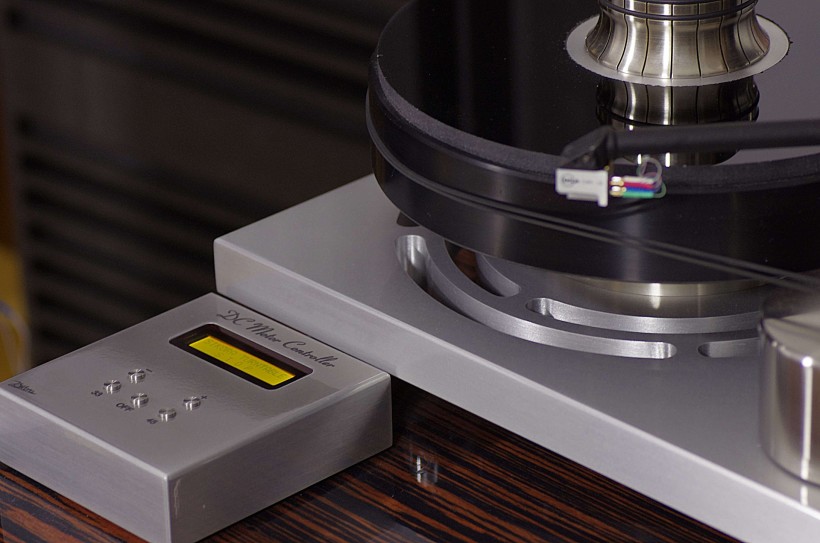
Next one in line was Led Zeppelin’s and right after listening to the “Whole Lotta Love” I was already sure that U2’s performance was no coincidence, that the Initial simply rocked! The recording quality of this album was surely better than that of U2’s (which does not mean that I would call it “an audiophile” one, but few rock albums are really that well recorded) and it was clear from the very beginning of the opening piece when I heard these fantastic guitars. These sounded meaty, rich, with proper drive, sometimes even aggressive and they lead the whole piece perfectly. The cymbals were more open, powerful, vibrant, but also richer. Plant’s palpable, lively voice traveled flawlessly between channels. It was surely not the best recording to assess the Initial’s performance in terms of imaging and soundstaging, but the artificial spatial effects that occurred in it were presented in a pretty convincing way. Both this album and the next ones, including those by AC/DC and Metallica, confirmed a close kinship with the bigger brother, Standard. This is because both were fully capable of delivering highly energetic performance, proper drive, dynamics and control and all these elements came together creating an immersive performance. Listening to several albums of the kind left me with a sore neck but hey, it was definitely worth it as I had a lot of fun.
I do not even remember the last time I spent so much time listening exclusively with rock albums. If only a recording gave the Initial a chance (which in case of rock albums was not too frequent, but some did that) the reviewed turntable proved how well-defined, powerful, fast and well-differentiated bass a vinyl record is capable to deliver, how much energy there was to dig out from the groove. Was is doing it better than my Standard? I would not go that far in my statement, because the latter delivers even more slam, goes even deeper/lower, provides even better focused, more stable bass foundation for the whole presentation. On the other hand the difference was not as significant as one would expect considering the price difference. There is no other turntable with similar price tag that I can think of, capable of delivering equally impressive rock performance.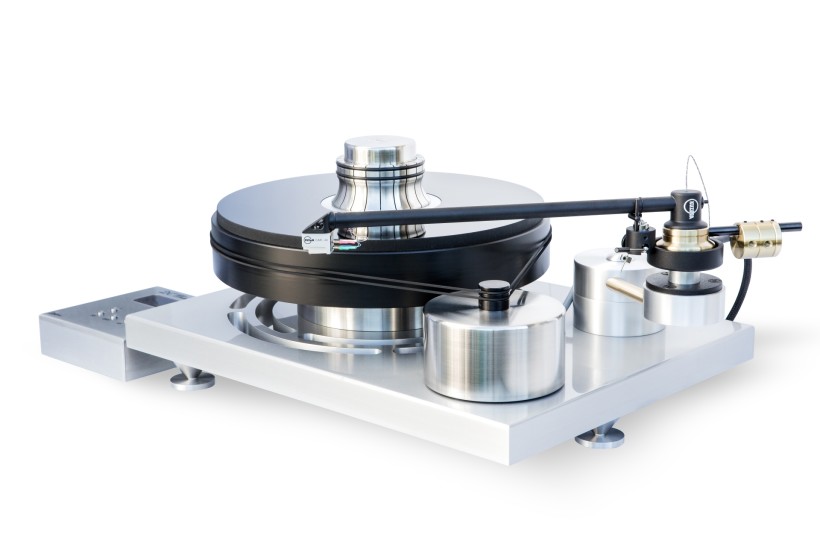
When it came to a quite good quality (I’m talking about the quality of the recording itself) Peter Gabriel’s album, “New Blood”, it became clear how much the Initial had to offer. While on previous records its role was, at least in part, to control and not add on top of certain chaos that is a characteristic feature of many rock recordings, now it could finally demonstrate its ability of extracting maximum information from the groove and presenting it with high accuracy. The vocals of Gabriel and the artists singing with him sounded remarkably natural. The orchestra accompanying stunned me with it’s power and momentum. I could almost feel the massive tutti, not just hear it, but even with the full power of the orchestra the Initial stayed in full control. It was a particularly dynamic, clean, transparent performance, which, partly due to an exceptionally low noise level from the turntable, translated into a detailed, precise, well-arranged presentation. What is very important is that the sound was at the same time remarkably rich and saturated. There was a proper, not exaggerated leading edge, nice sustain and finally a full, long decay.
To assess the full potential of the Initial I finally reached for some of the highest quality records in my collection, including 45 rpm pressings. One of them was frequently used during my tests: The MoFi release of Patricia Barber’s “Companion”. This is a live recording played mostly with acoustic instruments. Therefore, I could appreciate another advantage of this Polish turntable – its ability to recreate a realistic soundstage. It was quite huge. Front to back presentation was even more impressive than left to right though the latter was still wider than the distance between speakers. I was impressed, although considering my experience with the Standard not surprised, with stability and focus of this presentation – each element had its defined spot on the stage, each had a weighty, three-dimensional body. This created a feeling of a close, intimate even, contact with musicians, it made me feel a participant of an extraordinary musical event. The Initial beautifully rendered Patricia’s vocal, beautifully delivering the depth and richness of her voice. It didn’t forget about a characteristic feature of this vocal – sibilants – but delivered it in a very natural way.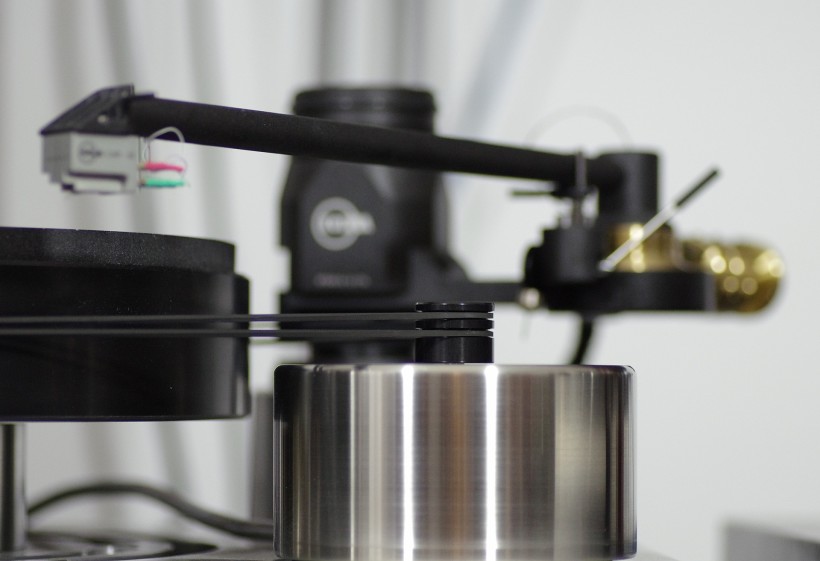
While listening to this album I confirmed what I’d heard earlier on the Stevie Ray Vaughan record and what I attributed rather to the tonearm than the deck. I mean I noticed there was no such immediacy of the attack as delivered by my own Standard (with Schroeder CB arm). For example, on the “Tin Pan Alley” SRV sings “I heard a pistol shoot …”, and simultaneously all instrument including his guitar imitate the pistol shooting in a very powerful but also very fast, immediate way. When played by the Initial it sounded good, really good, but lacked this incredible immediacy that the bigger brother with 4-times more pricey tonearm delivered. On the above mentioned album by Patricia Barber, for example in “Black magic women”, they used a lot of various percussion instruments. While the differentiation of them was great it was not as fast as in the case of my reference turntable. Please understand me correctly – these were not some significant differences, and tested turntable still played these records in a damn good manner, but it simply wasn’t as good as twice as expensive opponent. Which should not surprise anybody, should it?
The Classic Records’ release on a clear, one-sided vinyl of Cannoball Adderley’s “Somethin ‘else” sounded amazing. I loved Miles’ trumpet and Cannonball’s saxophone in particular. The sound of these instruments was incredibly open, full of air, powerful and vigorous, delivering as much of both master’s virtuosity as any recording could. It sounded incredibly pure, vibrant, and palpable, as if I was sitting in the front row of the audience in a small club. Hank Jones with his piano was located somewhere far behind the rest of the musicians and even when he took the lead the sound came clearly from behind, wasn’t pushed forward. The high resolution, good differentiation, beautifully conveyed timbre and texture of instruments, the tiniest details and subtleties perfectly captured on the recording – it all adds up, assuming playback on a high-end system, to a pure magic of this album. This is one of those records in my collection, that, when played, captures attention of even most music-magic-resilient friends who (surprisingly) stay absolutely quiet and focused till the very last note decays in a distance. And then they ask me to play another side of the disc. The Initial was able to extract almost as much magic from this recording as my Standard and many other much more expensive top performers I reviewed.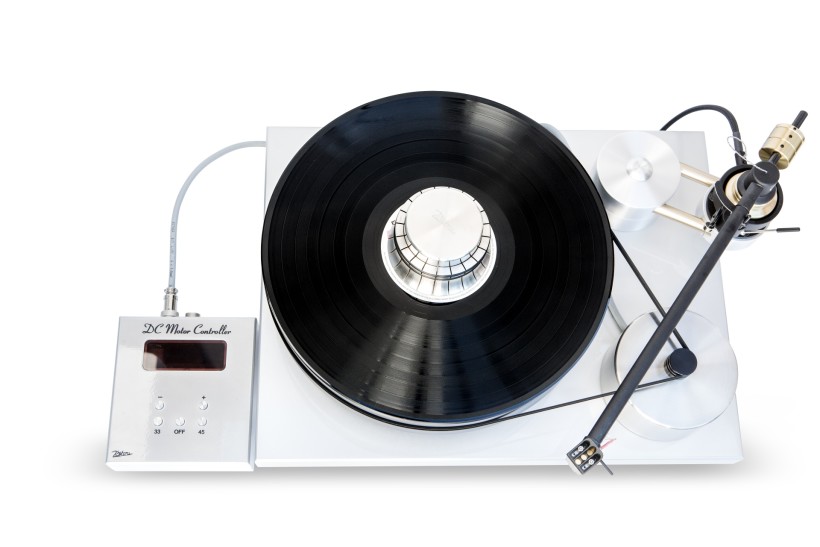
Part of my listening session was used also for classical music. The “Night on the Bare Mountain” by Mussorgsky performed by the Royal Philharmonic Orchestra conducted by Leibowitz, re-issued several years ago by Living Stereo is one of the highest quality recordings in my collection. It’s an amazing demonstration of the power of a symphonic orchestra (which even the sub-title, “The Power of Orchestra” suggest). The Initial effortlessly delivered not only the power, but also the momentum and dynamics of the orchestra. It was also a well organized, fully controlled presentation in which each group of instruments, and even individual musicians had their precisely determined place. Another huge advantage of the “entry-level” J.Sikora turned out to be its ability to convey the drama, climate of the music. The “Night on the Bare Mountain” is after all a story about witches coven in the remote place at night accompanied by the wind, storm that gives listener a sense of rising tension. This ambiance of a dark, even frightening place was presented in a very convincing way so I preferred to listen to this recording during the day rather than at night …  And since Mussorgsky’s music encourages, at least in my case, pumping the volume up, it gave me the opportunity to test this Polish turntable working in such, not so friendly for a vibration-sensitive device, conditions. No, acceptable to me, volume level was able to affect the quality of the sound coming from the speakers – no distortion, compression or whatsoever, no skipping stylus, even though the loudspeakers worked really hard pumping a lot of air into the room. The Initial remained steady as a rock, one might say.
And since Mussorgsky’s music encourages, at least in my case, pumping the volume up, it gave me the opportunity to test this Polish turntable working in such, not so friendly for a vibration-sensitive device, conditions. No, acceptable to me, volume level was able to affect the quality of the sound coming from the speakers – no distortion, compression or whatsoever, no skipping stylus, even though the loudspeakers worked really hard pumping a lot of air into the room. The Initial remained steady as a rock, one might say.
Upgrades available for the Initial
The entire above description applies to the Initial equipped with a glass mat and a record clamp/weight. Before finishing this test I decided to check whether these elements contributed to the performance and if so in which way. In both cases, I realized the enhancements to the sound quality only after extended period of listening and not while using only short musical fragments for quick comparisons, because the latter did not really allow me to form a firm opinion. Listening to the music with and without heavy record clamp/weight (exactly the same as the one I use with my Standard) was quite easy. The difference, which I noticed, I could describe as presentation being more focused with the clamp/weight, hence more precise. It wasn’t a big difference, and therefore quickly putting it on and off did not make it so obvious. It was only when I listened to a full side of a record first with and then without clamp I realized that without there was something missing in the performance, that it wasn’t quite as good. General impression was similar but then I started to study some details and realized that imaging and placement of phantom images on the stage were not as precise as with clamp/weight on.
The test with and without the mat wasn’t too complicated to carry out either thanks to the possibility of a simple VTA adjustment. The impressive thickness of the mat (10mm) makes a VTA adjustment a necessity – one needs to raise or drop the tonearm accordingly. Also in this case changes introduced to the sound were easier to pinpoint after an extended period of listening (though the fact that it did introduce some changes was fairly obvious from the start). In this case it was primarily the matter of sound purity and transparency, that perhaps could be credited to even better insulation of the stylus from vibrations. The enhancement might seem simple but in fact it has a lot of consequences. Even though at first I thought the sound was even more detailed, but in fact it was not about number of details but rather its clarity. All the tiniest shifts in tonality and dynamics were now presented in a more distinct way, as well as the details themselves, which directly translated into a more realistic presentation. Also the recordings and pressings were now better differentiated – a feature that would be highly appreciated by those who love to compare different issues of same albums but it also made listening to different records more interesting. Again, these were not some significant differences – this turntable delivered outstanding performance even without the glass mat. If, however, one had a chance to compare both performances, in particular when after listening with the mat on one moved to listening without it, similarly as in the case of clamp/weight, one would feel as if something was missing. To be clear – you will most likely love the sound of this turntable even without these two upgrades, but in my opinion, both of them make the difference worth the additional investment. The Initial even without them outperforms most similarly priced decks I know. A small price to pay, compared to what one has to pay for the whole setup. The clamp/weight and the glass mat takes the performance to even higher level, closer to that of the twice-as-expensive Standard model. Of course the latter still stays ahead in terms of sound quality but it is not such a great gap.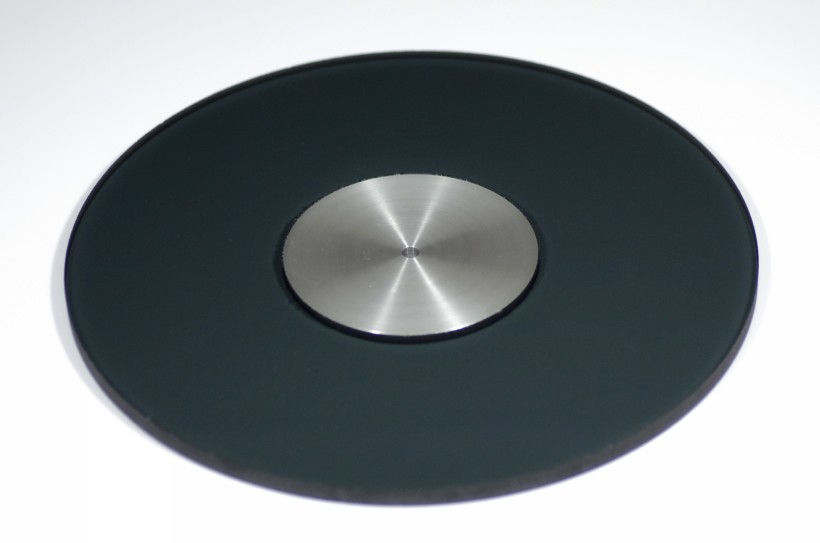
As you will see below there is one more upgrade option – a higher quality power supply unit. I didn’t have both versions at my disposal so I couldn’t perform a head-to-head comparison. Based on my experience with the Standard that I listened to for an extended time with the “standard” power supply and then got the top version designed for the Reference, I can assume, that also in the Initial’s case it is worth buying the best possible PSU. When I reviewed the Standard I loved it already with the standard PSU, but after trying it out with the top-of-the-line unit there was no going back for me and I ended up with it when I decided to buy the Standard deck for my reference system. With it the sound gained quite a lot in terms of dynamics and energy level of the presentation, there was even better control and definition of the bass, and even higher purity of the whole presentation in part due to now pitch black background. The difference was significant, much bigger than I anticipated. With the Initial it might not be as huge, but – please note that this is only anticipation based on the experience with the higher model – it should be significant enough to, if one’s budget allows it, purchase it too, whether with the deck or later as an “mandatory” upgrade. I’d say that of these three potential ways to enhance the performance of the Initial, the higher grade PSU might offer the biggest sound quality improvement.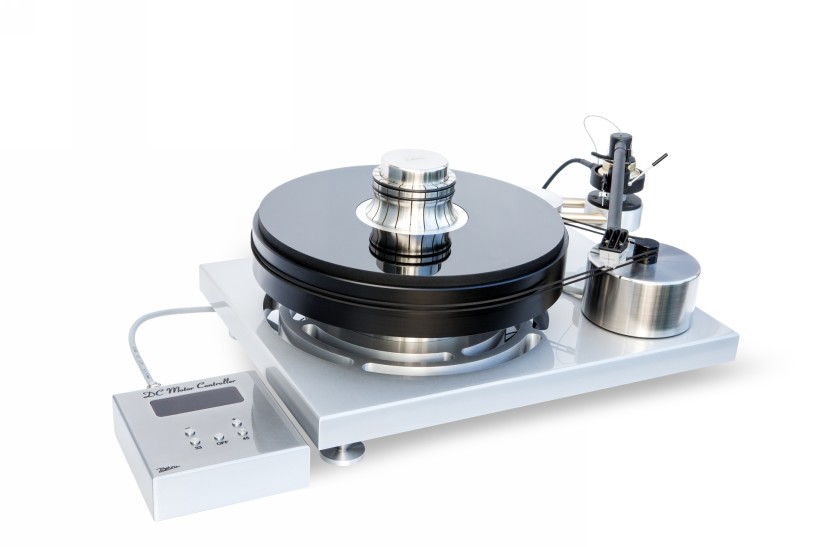
And just shortly about the test with almost twice more expensive cartridge, my trusted Air Tight PC3. It’s not about the class of the pickup itself because its advantage is obvious, or a description of the turntable’s performance equipped with PC3. The point here is that Initial immediately presented a higher detail resolution, even better separation, saturation, clarity and refinement of the sound – all key feature of this remarkable Japanese cartridge. Nothing, apart from the pickup, changed in the system – same deck, tonearm, phono-stage, amplification, loudspeakers and cables. And yet this entry level J.Sikora’s turntable benefited from a single, higher quality element of the setup. This clearly proved that on one hand the Initial offered an excellent performance already in its standard version, and on the other, that it has a potential to achieve a much higher one when equipped with available upgrades but also using higher class cartridge and most likely also a tonearm. That’s a clear benefit for the potential buyer – once the current sound quality won’t be enough there will be no need to replace the whole turntable, but rather make smaller (clamp/weight, mat and power supply) or larger (cartridge, tonearm) steps that will allow a new level of performance. I suggest to start with upgrades offered by J.Sikora. Later the time will come for a better pickup and tonearm if needed.
Summary
6000 EUR for a deck is obviously quite a lot of money to pay, and once you add on top the price of tonearm and cartridge it will look even more serious. What you have to remember is that pricing is relative, meaning that when judging it you have to compare it to other similar products this amount can buy you. When you do that, in my opinion, you shall realize that in terms of build, finish and performance, the J.Sikora Initial is a fairly, if not attractively, priced product. It is an entry-level model for this brand but don’t let that fool you – they simply start at high-end level and with more expensive models take the performance to even higher levels with the Reference being able to compete with many (much more expensive) top-of-the-line products of the renowned brands.
Whilst the Initial offers such a great performance already without any upgrades, those offered by the manufacturer, the clamp/weight, glass mat and power supply unit, plus the tonearm and cartridge of your choice, will take its performance to even higher level. Hence, this is not a deck one buys for a year or two to replace it with a more advanced one. You can buy it and keep it for many years (the build quality suggests it is a highly reliable product) achieving new level of performance with each new upgrade. It is also worth mentioning that despite the fact that to achieve much lower pricing compared to the Standard model, this Polish manufacturer had to cut some costs, they did it in a very smart way. The make and finish quality remained the same, absolutely astonishing, as with other two models, and so did some key elements of the design. The performance of the Initial can’t quite match that of the Standard, but the gap between them is much smaller than anticipated, and it closes with every added upgrade. It’s an absolutely fantastic and highly recommended product so if you have a chance try it for yourself.
Associated equipment:
- Amplifiers: Modwright KWA100SE, Audia Flight FLS-4
- Preamplifier: Modwright LS100
- Loudspeakers: Hansen Audio The Knight 2, Ubiq Audio Model One
- Analog sources: JSikora Basic turntable with Schroeder CB tonearm and AirTight PC 3 cartridge, ESE Labs Nibiru and GrandiNote Celio mk IV phonostages
- Interconnects: 聖Hijiri HGP-10R “Million”, LessLoss Anchorwave
- Speaker cable: LessLoss Anchorwave
- Power chords: LessLoss DFPC Signature, Gigawatt LC-3
- Power delivery: ISOL-8 Substation Integra, Gigawatt PF-2 mk2
- Equipment racks: Base VI in main system, Rogoz Audio 3RP3-BBS in analogue system
- Anti-vibration accessories: ROGOZ-AUDIO SMO40 and CPPB16 and Franc Audio Accessories Wood Block Slim platforms; ROGOZ AUDIO BW40MKII and Franc Audio Accessories Ceramic Disc Slim Foot
Retail prices:
- Initial deck: 6000 EUR
- Glass mat: 160 EUR
- Clamp: 550 EUR
- PSU: 550 EUR
- Kuzma tonearm: refer to manufacturer’s retail pricelist
- Kuzma cartridge: refer to manufacturer’s retail pricelist
Manufacturer: J.SIKORA


